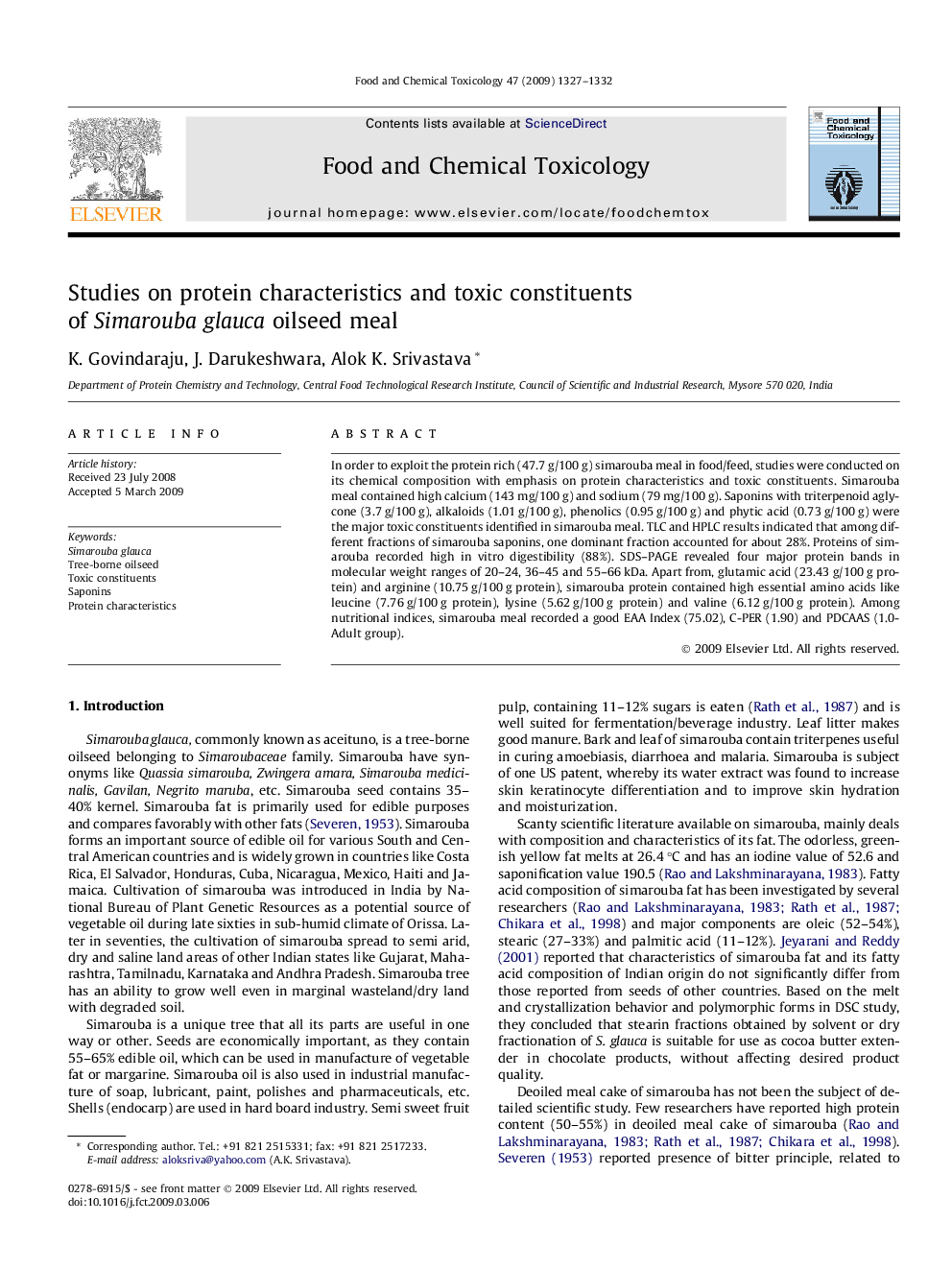| Article ID | Journal | Published Year | Pages | File Type |
|---|---|---|---|---|
| 5854433 | Food and Chemical Toxicology | 2009 | 6 Pages |
Abstract
In order to exploit the protein rich (47.7Â g/100Â g) simarouba meal in food/feed, studies were conducted on its chemical composition with emphasis on protein characteristics and toxic constituents. Simarouba meal contained high calcium (143Â mg/100Â g) and sodium (79Â mg/100Â g). Saponins with triterpenoid aglycone (3.7Â g/100Â g), alkaloids (1.01Â g/100Â g), phenolics (0.95Â g/100Â g) and phytic acid (0.73Â g/100Â g) were the major toxic constituents identified in simarouba meal. TLC and HPLC results indicated that among different fractions of simarouba saponins, one dominant fraction accounted for about 28%. Proteins of simarouba recorded high in vitro digestibility (88%). SDS-PAGE revealed four major protein bands in molecular weight ranges of 20-24, 36-45 and 55-66Â kDa. Apart from, glutamic acid (23.43Â g/100Â g protein) and arginine (10.75Â g/100Â g protein), simarouba protein contained high essential amino acids like leucine (7.76Â g/100Â g protein), lysine (5.62Â g/100Â g protein) and valine (6.12Â g/100Â g protein). Among nutritional indices, simarouba meal recorded a good EAA Index (75.02), C-PER (1.90) and PDCAAS (1.0-Adult group).
Related Topics
Life Sciences
Agricultural and Biological Sciences
Food Science
Authors
K. Govindaraju, J. Darukeshwara, Alok K. Srivastava,
